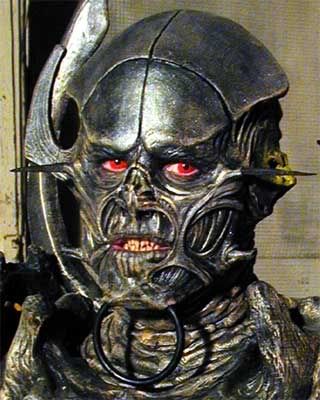

 The Accurate Reloading Forums
The Accurate Reloading Forums  THE ACCURATE RELOADING.COM FORUMS
THE ACCURATE RELOADING.COM FORUMS  Guns, Politics, Gunsmithing & Reloading
Guns, Politics, Gunsmithing & Reloading  Reloading
Reloading  Concentricity gauge ?'s
Concentricity gauge ?'sGo  | New  | Find  | Notify  | Tools  | Reply  |  |
| one of us |
I'm going to buy a concentricity gauge soon (like the next few days) and have narrowed to two choices. In no particular order I'm looking at the tool by NECO and the one from Sinclair. I know I can measure more than just runout with the NECO gauge but am not sure if I need that capability or not. Does anyone use one or the other? If you have any experiece with the NECO gauge do you use all of the features of the tool? Any feed back is appreciated | ||
|
| one of us |
Dave, I will answer this way. DEPENDS? not the kind you wear. The idea is load ammo as streight as possible. If you check the cases at each step of the process you will find a lot of variences. case neck TIR before sizing and after. Case neck wall thickness . and bullet run out after seating. Those are the things i look at when checking cases. | |||
|
| one of us |
I have a guage I built and a NECO ($35 at a gun show!). The NECO is most functional. My typical hand loads run .002 to .003 runout at neck or bullet. (Factory, including Hornady hand loads, runs .002 to .012 in a typical box of 20). From all I've read/experienced getting down to .002 TIR is all that maters, finer doesn't help much. Runout is the best way to measure - it is the total variation (and that's what counts). Neck thickness uniforming by outside neck turning helps, but is ONE of the sources of variation. Tim K (trk) Cat whisperer Chief of Smoke, Pulaski Coehorn Works & Winery | |||
|
| One of Us |
I have the Sinclair. No complaints, but... There is a tiny slip of paper [like from a fortune cookie] than comes in the box that says, ~ Your concentricity problems are probably caused by the expander ball.~ If you seat the bullet long and jam it into the lands, the front end of the bullet, at least, will be concentric with the bore. This may give a boost in starting pressure and so an increase in pressure, but will usually increase accuracy. The fit between bullet and throat is ~.002" clearance, so the effect if eccentric ammo can only throw off the point of impact ~ 1 moa. So if your groups are so bad you could not see a 1" improvement at 100 yards, ammo concentricity is not your main problem. All Forster or all Wilson seater dies will improve concentricity by .001", as will the sliding sleeve seaters from Redding or Hornady. Getting rid of the combination "size the case and pull the expander ball through the neck" step will improve by .004". | |||
|
| One of Us |
There is wisdom in this statement. Just pull the expander ball from your current set of dies and you might be suprised at the measurable difference. Many concentricity problems can be eliminated from careful F/L die adjustment. | |||
|
| one of us |
100% correct. There are lots of die "tuning" tricks, but I've started using a Redding body die/Lee collet die combination for loads that I want to squeeze the last bit of accuracy out of. It's amazing how much of a difference it makes when you take the expander ball out of the equation. | |||
|
| one of us |
DavidReed: I have been using the NECO Gauge for many years now. I like it. I recommend it. I have used a couple other simple tools for strictly turning and testing the finished cartridge. I was not impressed with anything else I have used to buy one of them. I have not used the Sinclair model though as yet. Good luck with whichever you choose. Hold into the wind VarmintGuy | |||
|
one of us |
I have used the Sinclair for about 4 years and am very pleased. As far as improving concentricity without going to mandrels and bushing dies, use Forster sizing and Redding or Forster competition seaters. RCBS dies haven't shown me a thing and Redding sizing dies have been hit or miss. A good die in a good press will eliminate most of the expander button "problems". Just one guy's opinion. Covey16 Funny,After a rotten war like this,how hard it is to leave- Duncan Grinell-Milne | |||
|
| Powered by Social Strata |
| Please Wait. Your request is being processed... |
|

Visit our on-line store for AR Memorabilia

